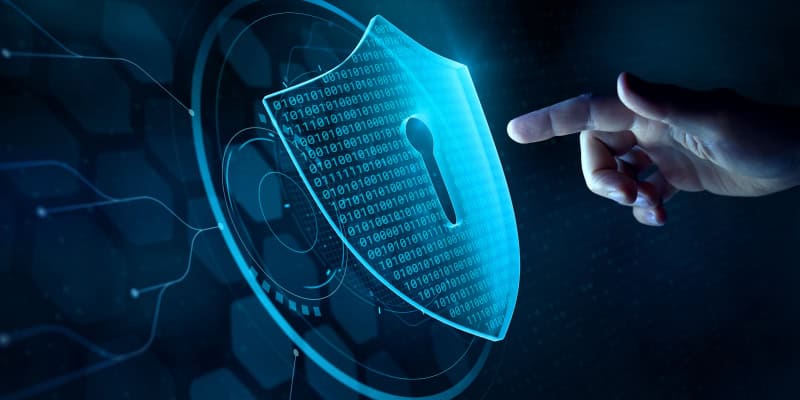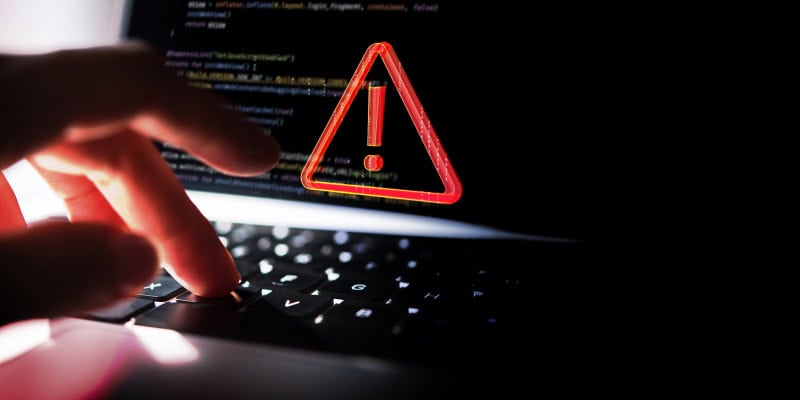Phishing threats loom large in today’s tech-driven world, and professionals are on the front lines of the target. Phishing stats for 2024 reveal a troubling trend as attacks continue to rise, with cybercriminals adapting swiftly to bypass evolving cybersecurity measures. Their tactic is effectively exploiting digitally weak points. Crafting a robust defense strategy is critical, requiring an understanding of the crucial statistics. This article offers a dive into the latest phishing statistics, trends, and attacker strategies. Discover how these insights can develop cybersecurity tactics to safeguard your digital assets. Let us learn how these findings of cybersecurity service providers can fortify your defense against phishing.
2023 Phishing Surge: Insights for Preparedness
Cybersecurity threats and phishing attacks evolve rapidly. Did you know there was a 58% surge in global phishing incidents in 2023? The rise in phishing stats alerts us to the sophistication and variety of attacker tactics, which range from emails to more subtle approaches via social media, texts, and calls.
Due to their vast user bases and sensitive financial data, financial institutions and social media platforms have become prime targets of these illegal activities. Cybercriminals strategically focus on these sectors, with financial institutions with rich personal data attractive for fraud and social media platforms easy targets for spreading harmful links or impersonating entities.
Attackers are diversifying, employing various tactics through social media platforms to cast a wider net, sending text messages with urgent offers, and making phone calls to impersonate entities to extract data. This broad attack spectrum poses a complex challenge for defenses, necessitating a thorough and flexible approach.
This intricate landscape requires a multifaceted approach, combining tech solutions, user education, and strict security practices. Understanding these trends from 2023 is crucial for enhancing cybersecurity measures and preparing for potential threats in 2024 and beyond.
The Modern Phishing Landscape: A Comprehensive Overview
Phishing has become a complex, multifaceted challenge in today’s digital world. This section explores the various elements that shape the current phishing ecosystem, from global trends to specific tactics and their far-reaching impacts.
The Role Of Human Error in Phishing Stats
Recent statistics point to human error as a significant cybersecurity flaw. Key factors include
- Negligence, often through simple mistakes.
- Stolen credentials, targeted for financial exploitation.
Human errors play a critical role in digital security. These errors lead to financial losses and compromise of sensitive data. Addressing these vulnerabilities through education is vital for strengthening digital defense against phishing.
Cybersecurity awareness and training are essential as phishing tactics multiply and advanced tactics are employed. Training can reduce breaches if individuals are empowered to detect and handle phishing attempts. Informed individuals are crucial defenders against phishing attacks.
Cultivating a culture of cybersecurity awareness is essential for risk mitigation and asset protection.
AI and Deepfake Impact on Attack Patterns
AI and deepfake technology have redefined phishing, making understanding their impact even more essential. AI aids cybercriminals in crafting sophisticated phishing emails and pages. Analyzing data, AI creates convincing phishing content, blurring the lines between real and fake.
Deepfake tech adds a new threat level, using AI for realistic video and audio. These can impersonate individuals accurately, risking political and financial stability. Deepfakes in phishing can lead to unauthorized data access or financial losses by mimicking trusted figures.
These tech advancements stress the need for heightened vigilance. As phishing evolves, staying informed and implementing strong security measures is crucial. Educating employees about risks and using advanced detection tools can aid in protection.
Phishing techniques powered by AI and deep fakes highlight the need for a proactive cybersecurity approach. Staying ahead of these deceptive trends may ensure better protection.
Attack Patterns and Data
Phishing trends in 2024 point to cybercriminals refining tactics and using technology to craft targeted campaigns. Phishing emails hit 3.4 billion every day—an overwhelming scale. Attacks have a significant target on financial institutions, social media, and web services. Economic impacts are severe, with losses due to ‘business-email-compromise’ reaching $2.9 trillion in 2023.
Data breaches stem from phishing, emphasizing human error and superior social engineering tactics. Advanced phishing schemes challenge defenses by using AI to bypass traditional methods.
To protect digital assets, stay updated on phishing tactics and implement layered security. Raise employee awareness about these threats to reduce attack risks.
Vulnerable Brands and Attack Avenues
In the changing threat landscape, phishing is a significant concern for IT professionals. Understanding the brands at high risk and the attack channels used is crucial for a comprehensive cybersecurity strategy.
Vulnerable Brand
Attackers often mimic major brands to trick people into revealing sensitive information. Recent data shows that 51.7% of email attackers impersonated the top 20 global brands. This tactic exploits trust to bypass defenses. Office 365 is commonly abused in fraudulent emails, indicating a shift toward SaaS platforms and webmail services.
Attacks Through Email, Social Media, and Messaging
Email remains a dominant communication medium, accounting for nearly half of phishing attempts. However, attackers also exploit social media and messaging apps, which offer fertile ground for these scams due to their versatility and widespread use. Social media sees a rise in attempts, with fake profiles, posts, and messages luring victims.
Vigilance is the first defense against these attacks. Stay informed about attacker tactics and adopt a cautious approach to protect personal information and organizational integrity.
Also Read: Why SMBs Should Adopt an Enterprise Mindset in Cybersecurity
Global Overview
The digital world has seen a surge in phishing of 393% emphasising the severity of the phishing threat. This growth points to the evolving sophistication and relentless pursuit of exploitation of cyber vulnerabilities.

The U.S. leads in spam email despatch, with 8 billion spam emails daily, followed by France, Germany, and Russia. This spam volume illustrates global phishing threats and the need for international cooperation to combat the menace. Cybersecurity professionals should advocate for threat intelligence sharing and robust frameworks across borders to mitigate phishing risks.
Organizations must bolster defenses and foster cybersecurity to secure a digital environment, safeguard data integrity, and ensure privacy worldwide. This global approach is essential in addressing the widespread nature of phishing and spam threats.
Impact on Organizations and Individuals
Phishing can impact organizations and individuals. For organizations, effects include financial losses and data breaches. Attackers can extract data within days, disrupting operations and causing long-term damage to reputation.
The impact on targeted individuals is substantial, with attacks like vishing causing both financial loss and psychological distress. This erodes trust in digital means and communications. Understanding the consequences is crucial for developing countermeasures.
Organizations must invest in advanced defenses, including AI-driven solutions, to detect and prevent phishing. Educating employees and the public on recognizing phishing signs and verifying digital communication’s authenticity is essential. Building a cybersecurity-aware culture helps mitigate risks and protect sensitive data.
Prevention and Mitigation Tactics
A robust and multilayered defense is vital in strategizing against phishing attacks. Key tactics include:
- Educating employees on phishing email signs and reporting suspicious messages.
- Implementing email authentication methods like SPF, DKIM, and DMARC to verify sender identity.
- Adopting a multilayered security approach, including end-point protection and web filtering.
- Using Security Information and Event Management (SIEM) systems for early detection.
- Leveraging threat intelligence for insights on phishing tactics.
- Securing digital assets and stakeholder trust.
Organizations need to stay vigilant and proactive about cybersecurity as phishing techniques evolve. Organizations can significantly reduce risks and protect valuable assets by implementing the above tactics. Remember, cybersecurity is a continuous journey that requires adaptation to stay ahead of threats.
Strengthen Your Defenses with CMIT Solutions’ Cybersecurity Solutions
CMIT Silver Spring provides comprehensive cybersecurity services to protect businesses from phishing attacks. Their proactive approach includes advanced threat detection, 24/7 monitoring, and employee training to identify and prevent phishing threats. By fortifying defenses with tools like email filtering and ongoing support, CMIT ensures businesses stay secure against evolving cyber risks.
The 2024 phishing statistics assert that cybersecurity goes beyond technology to include vigilance and proactive measures. Cybercriminals refine approaches, using advanced tools from sophisticated software to deepfakes and breach defenses. CMIT Solutions, Silver Spring, offers cutting-edge IT services that are powerful weapons against phishing. Get in touch with us today to protect your business against phishing attacks!
Our IT Services
| Managed IT Services | Cybersecurity | Productivity Applications |
| IT Support | Cloud Services | Network Management |
| Compliance | Data Backup | Unified Communications |
| IT Guidance | IT Procurement |




